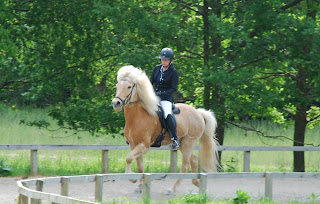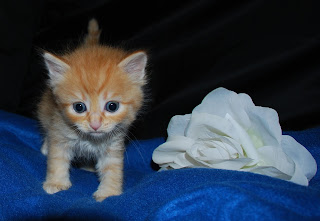Have you ever watched someone riding in complete sync with their horse, and marveled at the way their hands somehow just floated in tandem with their equine partner, seemingly doing absolutely nothing?
Then, when you looked at the horse (which is the proof of the pudding) you saw the epitome of pleasure? You could almost see the smile on his face! While the rest of him floated along gracefully – ears flopping, body swinging, stride reaching – you knew there was no mistake: those hands were singing poetry in his horsey mind and he was relishing the moment!
Before you protest – I know! Riding ISN’T all about the hands! 
We’ve discussed the critical dependency of all the aids on each other as well as the foundation of riding, the all-powerful seat. There is no such thing as just one aid that surpasses all others. The hands are just one aspect in all the puzzle pieces that must go together to make their own subtle contributions to the scene described above. There simply is no other way.
Having said that, as we are a hand-dependent species, and most of us pay entirely too much attention to what our hands are doing with the reins (and therefore to the horse’s mouth), I thought we should peruse over the aspects of the hands of riders we admire.
What goes into developing the type of hands that horses dream of?
1. Good hands wear gloves.
Let’s face it – there is a reason for those riding gloves. Don’t wear them only for their beauty! Good riding gloves allow for a subtler, finer grip on the reins. There is no slip and conversely, no stick. You can hold the reins with a firm grip when necessary and soften the grip in a moment’s notice. Compare good gloves to good tires, and how much nicer your ride feels with better tires.
2. Good hands give.
I believe that learning to give in a way that is useful for the horse is one of the most difficult skills to learn. There is something indescribable about a good give – it’s all about how it feels. Certainly, an onlooker will never be able to see a good give.
However, what will be clearly evident is the horse’s reaction to the give – he rounds more, he flows more fluidly, his neck reaches forward (not the same thing as sticking up/down and out) and his strides become bolder.
3. Good hands don’t give too much.
Aye, there’s the rub. Hands that “throw away” the reins are doing a disservice to the horse, even if the rider thinks that letting the horse go is a good thing. An effective contact, whether on a long or short rein (and in a long or short body outline), is a support system to help the horse maintain his balance.
The very act of riding (weight of the rider and expected movements) changes the horse’s natural equilibrium. Beyond that, our horse’s natural balance is often something we want to purposely improve because he was born with less-than-perfect conformation. Therefore, if we let the horse “do his thing”, he may be in fact off balance and resentful for it.
4. Good hands stay closed.
There is a reason why the hands should always stay closed in a soft but firm fist: the horse’s mouth. From the moment they pick up the reins, the hands hold a responsibility for being kind and consistent to the horse’s mouth. Any change in the hands translates to a change in the horse’s mouth. Consistency is key in keeping the horse’s attention and confidence.
5. Good hands are connected to upright forearms.
You’ve probably heard this one before: “Thumbs uuuppp!”
However, it’s not really about the thumbs. It is about the forearms and the strength they project into the horse’s mouth.
If your hands are thumbs up, the forearm bones are “supinated”. That means the bones are parallel to each other. In this position, the arm has more strength and better fine motor ability.
If your hands are flat on the reins, the radius and ulna, are “pronated”. When the bones are twisted in this fashion, the muscles of the arm arm much less coordinated. Every action is harsher in the horse’s mouth.
Good hands are constantly aware of the power they put into the horse’s mouth, and work hard to avoid being abrupt.
6. Good hands support the body aids.
There are times that the hands need to support the aids coming from other parts of our body. Therefore, they need to be “clicked in” with the rest of the body so as to follow through what our body said – allow to move bigger, resist to hold together, close the outside and open the inside to reinforce a turn aid, etc. Basically, good hands know how to morph into the body and “become one” with the aids to present a unified feel to the horse.
7. Good hands are independent of the body aids.
As with everything horsey, the opposite must also be true! That is, good hands must also know how to be entirely independent of all the other aids. In this case, the hands choose to NOT follow the body aids – in fact, they may stay completely neutral, or even signal something else.
But the hands say, “Put your energy over the back and into a rounder body outline.”
8. Good hands play the piano.
If you’ve ever played the piano, you know what it feels like to lightly and delicately press on a key in order to influence a sound. You can press harder, softer, longer, shorter – you can evendance the fingers along the keyboard! So yes, good riding hands have fingers that do exactly that on the reins. They know what the horse needs when. The horse can count on those fingers for support when he needs it and for a freedom or sense of humor at other times.
9. Good hands don’t think.
Thinking hands are slow, awkward, reactive. When the horse is in motion, thinking through what the hands need to be doing simply takes too long. You will always be behind the motion and reacting to what the horse has finished doing. Developing non-thinking hands that do what they need to do in the moment takes a lifetime and much concentrated work. But it is possible. And every horse you ride will be thankful for your efforts.
10. Good hands change little and often.
And this is why you cannot truly see good hands doing their thing. They are as much in a flow of movement as the rest of the body and the horse.
Good hands are working even when they appear to be still.
But they make small changes, stay consistent, and continuously keep up a conversation with the horse.
What do you think good hands do?





















































































